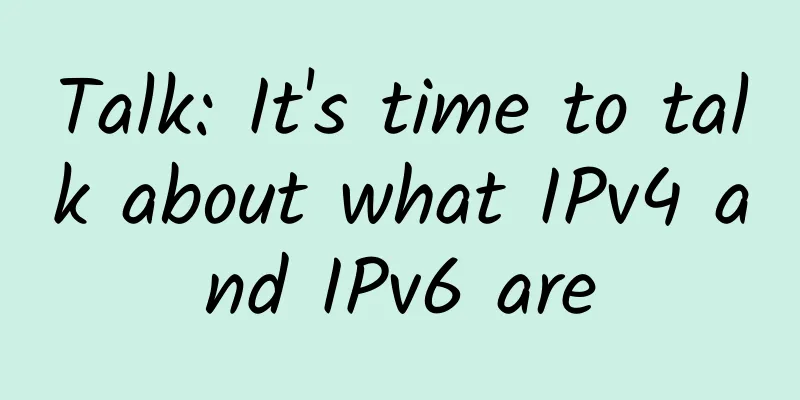∑co Time | Empowering the edge from the "core" to unlock the smart password of edge data

|
The cities we live in are becoming more and more intelligent. Edge computing is becoming more and more important as everything is sensed, connected and intelligent. This issue of the #∑co时间# series specially invited Zeng Xiangyong, chief architect of Huawei's data storage edge field, to share his wonderful speech "Connecting the cloud with data and bringing intelligence to the edge". Edge computing enters thousands of industries The rapid rise and application of technologies such as 5G, AI, and IoT have activated the vitality of edge computing. More and more companies are also undergoing digital transformation, and a large number of companies have begun to deploy IoT devices such as smart cameras and smart sensors, which will generate a large amount of data backhaul. For example, in the coal industry, safe production is of vital importance. In mines, the traditional method is to manually check with the naked eye whether employees are wearing helmets, whether equipment transmission is abnormal, whether the mine is leaking, and whether gas operations are standardized. Manual visual inspection is not only inefficient, but also prone to omissions. Using smart cameras and AI to perform real-time analysis and reasoning on videos not only improves efficiency, but also makes it less likely to make omissions, thereby improving the level of safe production. On the highway, as long as we apply for ETC, we don't need to stop and pay fees when entering and exiting the provincial highway. How is this achieved? It's very simple. Radars, cameras and edge business processing systems are deployed on the gantry of the highway, which can dynamically identify the information of vehicles coming and going, thereby reducing the congestion caused by parking fees and improving travel efficiency. After the edge site data is processed, it is uniformly aggregated to the data center. Through cloud-edge collaborative analysis, the vehicle's passage trajectory can be profiled, thereby realizing the rooting of the vehicle trajectory. In the future, real-time road condition monitoring maps can be generated through this information, and the "peripheral nerves" of the traffic system can be established to realize road condition identification and vehicle-road collaboration, which can provide assistance for assisted driving. Another typical edge scenario is the smart park. Currently, industrial parks are developing towards comprehensive intelligence, which not only requires automatic identification of people and vehicles, but also requires support for security monitoring, intrusion detection, and smart office functions. The smart park is a typical edge mixed load scenario. In addition to processing sensor and video data, it is also necessary to deploy the park's business and office systems. In this way, the existence of the edge computing system can make park management more intelligent and efficient. According to IDC's forecast, by 2025, the world will generate 180ZB of data, a 5.5-fold increase from 2018, of which 75% will be generated at the edge. Of this 75% of data, 50% needs to be processed at the edge. It is impossible to transmit all of this massive amount of edge data to the data center for processing, which not only takes up a lot of bandwidth, but also fails to meet the real-time requirements of the business. If the data is processed at the edge close to the end, the business latency will be greatly shortened. In a typical business scenario, the latency can be shortened by 5-10 times. In terms of bandwidth, after the edge extracts valuable information, it only needs to transmit the valuable data to the data center for processing, which can reduce the bandwidth demand tenfold. Zeng Xiangyong believes that different edge scenarios have different requirements for devices, and edge scenarios can be divided into three categories: 1. Large-scale edges of large enterprises and enterprise parks generally need to provide complete virtualization, container orchestration, AI computing, big data analysis and database capabilities, support smooth resource expansion, and generally require computing power of more than 12 nodes; 2. Medium-sized edges such as branch offices and business outlets generally adopt a center + branch topology, require applications and algorithms to be distributed uniformly from the center, provide virtualization, container orchestration, AI computing and IOT data analysis capabilities, and are generally between 3 and 12 nodes in scale, requiring rapid deployment in the form of whole cabinets; 3. Small edges at locations such as gas stations, mines, and highway gantries are mainly used for video processing and IoT data analysis, are deployed close to end devices, do not have dedicated deployment rooms, need to support a wide temperature environment, are generally powered by city electricity, have high cost-effectiveness requirements, and are generally between 1 and 3 nodes in scale. Huawei provides "Simple + Intelligent" edge solutions Although edge scenarios are classified differently, there are common needs among them, which Huawei summarizes as "minimalism + intelligence + edge autonomy." Simplification includes simplified delivery and simplified operation and maintenance. Edge devices require an integrated delivery method. The devices will be pre-installed during production and ready to use after delivery. In addition, edge devices must be able to support unified management. Faulty devices can be located in the management center, and operation and maintenance personnel can complete troubleshooting without professional IT skills. Intelligence requires that edge devices have AI capabilities. They must not only have built-in AI chips but also provide an AI algorithm warehouse. They must also support continuous iterative training of AI algorithms based on edge data and provide online updates of AI algorithms to continuously meet the accuracy requirements of edge business algorithms. Edge autonomy has two meanings. The first meaning is that when the edge is disconnected from the center, the edge business can run normally without interruption, even if a hardware failure occurs. The second meaning is that the edge supports management autonomy, and the edge can define its own data management strategy and business processing strategy on its own management portal. Based on the insight and understanding of the edge, Huawei designed and developed the FusionCube edge data storage solution. The architecture of this solution is designed around simplicity, intelligence, and edge autonomy. In order to meet different application scenarios, Huawei has designed four types of edge devices from large to small: FusionCube2000: Generally deployed in the computer rooms of enterprises and parks, it provides multi-load processing capabilities, and can provide storage, containers, virtualization, AI and other platform capabilities to the outside world, supporting horizontal expansion based on load requirements. FusionCube1000: Applicable to deployment in edge micro data centers. Generally, it is delivered in a whole cabinet and integrates computing, For components such as storage, network, security, UPS and AI, once the equipment is shipped to the customer site, the site deployment can be completed within 2 hours. FusionCube500: It can be easily deployed in common indoor environments, including mining areas, toll stations, gas stations, and office areas. The equipment is highly integrated and is an all-in-one device specially customized for edge scenarios. FusionCube500M: Similar to common IoT gateways or AR gateways, it supports more flexible deployment methods. These four types of equipment will pre-integrate the required resources according to customer needs, including computing, storage, network, firewall UPS and AI, and complete the pre-installation of hardware and software of all equipment on the production line. After the equipment arrives at the customer site, it can be used after plugging in. When a device fails, maintenance personnel can replace the parts independently. Through FusionCube Center software, a set of software can support the unified management of 20,000 edge sites. The unified operation and maintenance, upgrade, application distribution, resource scheduling, etc. of all edge sites can be completed in the center, and mobile operation and maintenance through mobile phone APP is also supported. The device is equipped with Huawei Ascend chip, and edge AI is completed through edge-cloud collaboration. The AI algorithm trained on the cloud can be automatically pushed to the edge according to the strategy to meet the edge AI processing requirements. FusionCube500 has the highest integration in the industry As the industry's most integrated edge data storage infrastructure, FusionCube500 achieves "5 in 1" hardware, with built-in computing, storage, network, security and AI capabilities. A single frame supports up to 4 Kunpeng nodes, each of which can provide 8 Ascend chips to the outside world. At the same time, a single frame can also provide 100TB of effective storage capacity to the outside world. On the network, FusionCube500 has 2 redundant switching boards built in, providing internal network interconnection for the 4 nodes in the frame, thereby achieving normal operation of the business without external switches. In addition, this product also has built-in security capabilities, which can provide firewall capabilities and WAN network access to the outside world. In terms of environmental adaptability, FusionCube500 can be deployed not only in standard cabinets, but also in independent towers. It can be flexibly deployed in offices, and a single engineer can complete the installation of the equipment. It can adapt to a wide temperature environment of 55 degrees, and ordinary AC power can achieve normal operation of the equipment. In terms of software, Huawei has built-in enterprise storage software that can provide standard blocks, files and other interfaces to upper-layer applications, and has all the advanced features of enterprise storage, including EC, deduplication and compression, disaster recovery and backup, etc. At the same time, the device also has built-in virtualization, containers, AI frameworks and lightweight container orchestration capabilities, providing an open edge data processing platform to the outside world. In addition, through the built-in management software, local autonomous management of the device can also be provided, and local device management and service issuance can be achieved when the edge is disconnected from the center. Empowering the edge from the “core” To empower edge devices, Huawei chose to start with chips. The FusionCube series of products are equipped with Huawei Kunpeng 920 and Ascend 310 chips. At the typical main frequency, the SPECint Benchmark of Kunpeng 920 exceeds the industry by 25%. Ascend 310 is Huawei's first full-scenario artificial intelligence chip. It also provides supporting Mind Studio to the outside world, through which reasoning is completed at the edge. In addition, the product also integrates Huawei's OceanStor storage device, and Huawei's self-developed chips are used in data storage, transmission, calculation, and management. At present, Huawei has cooperated with Shanxi Elite Digital Intelligence to launch a coal mine brain solution to improve mine safety. Huawei has also cooperated with Volkswagen in Germany to provide branch office solutions, which has greatly reduced the IT operation and maintenance costs of Volkswagen branches. Conclusion Different industries have different requirements for edge computing. Huawei uses its chip capabilities, hardware capabilities, and basic software capabilities to build a minimalist, intelligent, and autonomous edge data storage platform, providing a solid digital foundation for thousands of industries. Huawei has in-depth cooperation with ISVs from all walks of life to provide edge solutions for customers in different industries. |
<<: AI and Wi-Fi 6: Driving the Revolution in Home Wi-Fi
>>: In the era of instant messaging, what else can 5G bring us besides speed?
Recommend
Building the hospital of the future Aruba helps the Children's Hospital of Alabama in the United States transform its digital
Alabama Children's Hospital is a large childr...
spinservers: 256GB memory San Jose server from $99/month, Dallas server from $89/month
spinservers recently released several special-pri...
HostKvm New Year Promotion: 30% off Hong Kong International/Los Angeles VPS, 20% off other data centers
HostKvm also released a promotional plan for the ...
"Flooding" or rational construction? Operators should deploy 5G in a rhythmic manner
Nowadays, 5G has become a hot topic around the wo...
Comprehensive Anatomy of Data Center Facility Planning and IT Operations Checklist
Making the right choices in terms of data center ...
Qualcomm predicts that by 2035, China's 5G value chain will contribute nearly 10 billion yuan in economic value
Recently, at the 2021 Annual Meeting of the China...
Huawei releases OptiXstar Gigabit Smart Optical Modem flagship product to create six-star quality home broadband in the F5G era
[Shenzhen, China, March 30, 2020] Today, Huawei o...
What is the difference between 5G bearer network?
Hello everyone, I am Xiaozaojun. In today’s artic...
[Black Friday] Megalayer: Hong Kong/Singapore VPS flash sale 9.9 yuan/month, Hong Kong server 199 yuan/month, top up and get 10% back
Megalayer launched a Black Friday flash sale, whi...
Where is the way out for SDN?
SDN was born in 2006. It was a campus innovation ...
How did the No. 1 brand of domestic load balancing products become successful? Here’s the answer from Deepin Technology!
According to IDC data in the first quarter of 201...
Let's talk about virtual mobile network security
1. Introduction With the rise of 5G technology, v...
Will ZeroNet subvert the existing Internet network?
ZeroNet is a revolutionary P2P network based on B...
RackNerd June Promotion: 1.5G memory VPS annual payment starts at $15.78, multiple data centers in San Jose/Seattle, etc.
RackNerd released a promotional package for June,...
80VPS: 16TB storage server with unlimited traffic in Los Angeles MC data center starting from 850 yuan per month
80VPS is a long-established Chinese hosting compa...









